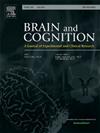健康成人与年龄相关的皮质变化和认知能力
IF 1.4
3区 心理学
Q3 NEUROSCIENCES
引用次数: 0
摘要
衰老是一个连续的过程,皮层变薄是一个常见的结果。本研究旨在评估健康人群中与年龄相关的皮质厚度、体积和面积差异。76名健康个体被分为三个年龄组:年轻人(25 - 40岁,n = 25)、中年人(41-55岁,n = 24)和老年人(56-80岁,n = 27)。与年轻人相比,老年组在额叶区(左吻侧、中额叶、双侧外侧眶额、中央前回)、颞叶区(颞中、右侧颞上、右侧颞下)、边缘区(左岛、左侧扣带回)、枕叶区(右侧楔叶、枕叶外侧、右侧枕叶外侧)和顶叶区(楔叶前叶和左侧中央后回)的皮质灰质明显减少。与年轻人相比,老年人在听觉语言学习(AVL)、回忆记忆、工作记忆、视觉运动协调方面表现出与年龄相关的下降。中老年人群左扣带回后部变薄与听觉言语学习表现呈正相关。发现总和双侧皮质厚度和体积与年龄呈负相关。本研究揭示了衰老对大脑皮层厚度、体积和认知能力的影响,并对老年人认知能力下降的管理及其预防性干预具有启示意义。本文章由计算机程序翻译,如有差异,请以英文原文为准。
Age-related cortical changes and cognitive performance in healthy adults
Aging is a continuous process with cortical thinning as a common consequence. This study aimed to evaluate cortical thickness, volume and area differences associated with age in healthy population.
Seventy-six healthy individuals were divided into three age groups: younger (25–40 years, n = 25), middle-aged (41–55 years, n = 24), and older (56–80 years, n = 27). The elderly group exhibited significantly reduced cortical gray matter in frontal regions (left rostral middle frontal, bilateral lateral orbitofrontal, precentral gyri), temporal (middle temporal, right superior temporal, right inferior temporal), limbic regions (left insula, left posterior cingulate gyrus), occipital (right cuneus, lateral occipital, right lateral occipital), and parietal (precuneus and left postcentral gyri) compared to the younger group.
Older adults exhibited age-related decline in performance of auditory verbal learning (AVL) and recall memory, working memory, visuo-motor coordination, compared to younger adults. Thinning of the left posterior cingulate gyrus is positively correlated with auditory verbal learning performance in middle and older age groups. Total and bilateral cortical thickness and volumes were found to be negatively correlated with age.
The present study shows the impact of aging on cortical thickness, volume and cognitive performance and have implications in the management of cognitive decline in the ageing population including prophylactic interventions thereof.
求助全文
通过发布文献求助,成功后即可免费获取论文全文。
去求助
来源期刊

Brain and Cognition
医学-神经科学
CiteScore
4.60
自引率
0.00%
发文量
46
审稿时长
6 months
期刊介绍:
Brain and Cognition is a forum for the integration of the neurosciences and cognitive sciences. B&C publishes peer-reviewed research articles, theoretical papers, case histories that address important theoretical issues, and historical articles into the interaction between cognitive function and brain processes. The focus is on rigorous studies of an empirical or theoretical nature and which make an original contribution to our knowledge about the involvement of the nervous system in cognition. Coverage includes, but is not limited to memory, learning, emotion, perception, movement, music or praxis in relationship to brain structure or function. Published articles will typically address issues relating some aspect of cognitive function to its neurological substrates with clear theoretical import, formulating new hypotheses or refuting previously established hypotheses. Clinical papers are welcome if they raise issues of theoretical importance or concern and shed light on the interaction between brain function and cognitive function. We welcome review articles that clearly contribute a new perspective or integration, beyond summarizing the literature in the field; authors of review articles should make explicit where the contribution lies. We also welcome proposals for special issues on aspects of the relation between cognition and the structure and function of the nervous system. Such proposals can be made directly to the Editor-in-Chief from individuals interested in being guest editors for such collections.
 求助内容:
求助内容: 应助结果提醒方式:
应助结果提醒方式:


